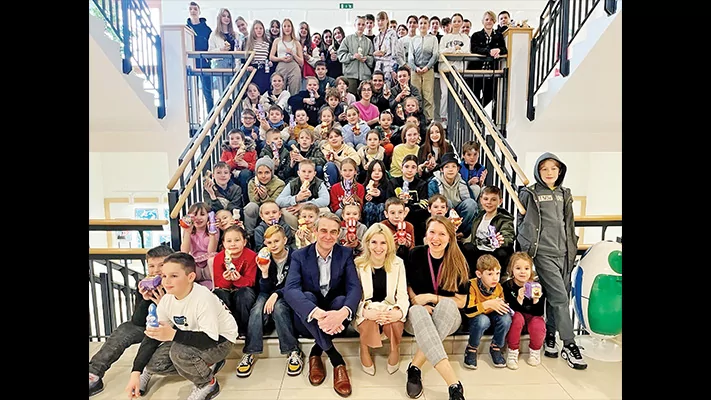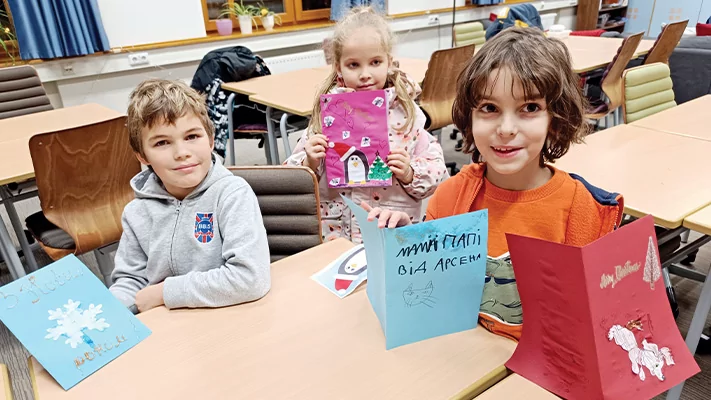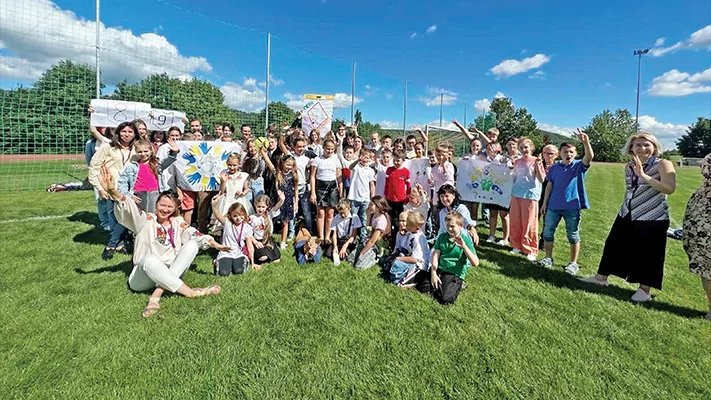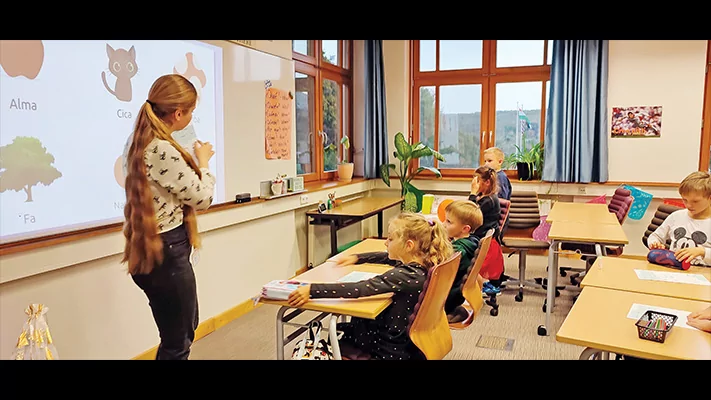
After a busy political season, Budapest’s fashionable downtown is still festooned with posters and banners from the recent mayoral elections. Most of the signs refer to local issues, from building playgrounds to improving public safety, that wouldn’t be out of place in any major European city. Lurking in the background is the reality that Budapest, a cosmopolitan enclave in an otherwise conservative country and a key economic hub, is often out of step with the rest of Hungary. Since 2019, the position of mayor has been held by the recently reelected Gergely Karácsony, a former academic, possible challenger for the prime ministership, and hate figure on the Hungarian Right. In a political landscape dominated by Prime Minister Viktor Orbán’s conservative Fidesz party, Karácsony’s Budapest is a political and cultural outlier.
From gay rights to urban development, Budapest is often at odds with the rest of the country, a divide that extends even to foreign policy. Befitting his unofficial role as leader of the Hungarian opposition, Karácsony has visited Ukraine and repeatedly expressed sympathy for the Ukrainian government’s war aims. Orbán, meanwhile, is an outspoken advocate for a negotiated settlement and has irked NATO and European Union allies with his conciliatory approach to Russia. He also tends to harp on the rights and privileges of a Hungarian-speaking minority in southwestern Ukraine, a major bone of contention between the two governments. On June 1, just as the mayoral contest entered the homestretch, Orbán headlined a peace rally on Budapest’s scenic Margaret Island.

Despite its prime minister’s strained relationship with the Ukrainian government, Hungary has welcomed hundreds of thousands of refugees since the beginning of the conflict. Many have moved further west in search of jobs or to be with relatives who have already established themselves abroad. Quite a few young Ukrainians, however, have stayed in Budapest, where the most immediate concerns are finding a school and restoring a semblance of normality to lives disrupted by conflict and political upheaval. As the war in Ukraine drags into its third year, these students are still adjusting to life in a foreign capital.
The American International School of Budapest is located in the leafy hills of suburban Buda, far from the campaign rallies and shouty billboards of the capital’s bustling downtown. For the past two years, AISB has been home to a school within a school for refugee Ukrainian students, many from the country’s war-torn eastern provinces. Nika Kolomiiets is from Uman in central Ukraine but was attending university in Budapest when the fighting broke out. Now she teaches refugee students at AISB, which she says is like a small piece of America dropped into the Hungarian countryside. Much of the campus, from the soccer field to the cafeteria to the art projects and posters on display in the hallways, would be instantly familiar to suburban American teenagers.

The trouble with talking to a passel of Ukrainian students at the end of a long day, aside from the obvious issues of limited English comprehension and general distractedness, is that there are too many Sashas, of both genders, to keep track of. In the fifth grade classroom, the students tend to copy one another when one finds an answer they all like. Although the range of English ability is pretty wide, the fifth graders uniformly describe their language skills as “so-so.” Everyone’s favorite class is “sport.” They keep in touch with friends and family back home on Telegram, Viber, and Discord. When asked if they like Hungary, Illia, one of the more talkative members of the group, says, “Yeah, but Ukraine is the best.” His buddies Mykhailo, Roman, and Dani nod enthusiastically.
The students have busy schedules. From 8 a.m. to 2:30 p.m., they are legally required to attend normal Hungarian schools in Budapest, where they take classes in one of Europe’s most difficult languages. On Monday, Wednesday, Friday, and Saturday, they come to AISB for supplementary lessons with Ukrainian teachers on math and their native language, history, and culture. Most live with family members who have managed to relocate to various neighborhoods in Budapest.
Learning in a foreign language is difficult under any circumstances, but Hungarian presents a unique challenge. Ukrainians and Russians have no trouble communicating with one another, and the students and teachers from central and eastern Ukraine are usually bilingual. Ukrainians in Poland or Slovakia are able to make themselves understood by locals, though they must adjust to using the Latin alphabet. Hungarian, however, is completely unrelated to any neighboring language. Despite attending a Hungarian university, Nika is taking all of her classes in English. She sheepishly tells me she stopped taking Hungarian lessons.

The fifth graders are friendly and talkative, but you are occasionally reminded of why they’re studying in a foreign country. Nika gently chides one student for saying “thank you” in Russian (“spasibo”) instead of the preferred Ukrainian term (“dyakuyu”).
The older students are more comfortable expressing themselves in English and more attuned to war’s unpleasant realities. Sasha, a high schooler on the cusp of graduation, said she’s missing her “prom class” back home in Zaporizhzhia, a city in southeastern Ukraine that has suffered heavily from Russian missile and artillery bombardment. She has also noticed a hardening of attitudes toward Russian culture and language. “Before the war, we used to study Russian,” she said. It’s no longer part of the curriculum.
Many of the students had their lives upended by the sudden outbreak of war. Nikita, a talkative ninth grader from Kyiv, remembers waking up to the news of the Russian invasion. “I’m scared, and I said to my mom, ‘I go to school or no?’” He ended up in Budapest, but many of his friends moved to other countries. He keeps in touch with old classmates in Poland and the United Kingdom via the “boys’ chat” on Viber.
Nikita’s friend Yehor was also in Kyiv when the fighting started. He spent two months in Uzhhorod in southwestern Ukraine before moving to Eger, a town in northeastern Hungary, for the summer. Since then, he’s resettled in Budapest.

Many of the students’ friends and family members have been touched by the war. Peter and Pasha, twin ninth graders from the coastal city of Odesa, vividly remember hearing sirens and rocket strikes in the opening months of the conflict. They now live with their mother in Budapest while their father works on a massive container ship somewhere in the Pacific Ocean. The twins hope to attend a technical college for sailors in Odesa and follow in their father’s footsteps, but they are unsure about going back while the fighting rages. They also stay in touch with a 21-year-old friend serving in the Ukrainian military. He has caustically told them, “I will give you an invitation to the war anytime.”
The twins’ friend Bogdan is a 10th grader from the Donbas region in eastern Ukraine, now mostly occupied by the Russian military. His father is a major in the Ukrainian army tasked with training new recruits. Bogdan wants to be a lawyer. Like the twins, he is uncertain about continuing his education as the war drags on.
Unsurprisingly, the students have a range of opinions about the course of the war. Nikita, never shy about expressing his views, said Ukrainian President Volodymyr Zelensky is corrupt. Valerii, an 11th grader from Kyiv with a cross dangling from his left ear, is also pessimistic. He said he worries the country is becoming a dictatorship and that Ukrainian troops are being treated like cannon fodder. Another Sasha, this one an eighth grader from Donbas, said he strongly disagrees. He said young Ukrainians need to go back and rebuild, not talk trash from outside the country.
The teaching staff at the Ukrainian school is stretched thin. The principal, Oksana Matviishyna, was able to find space for her makeshift operation because she worked at an international school in Kyiv before the Russian invasion. Her old principal asked her counterpart at AISB to help Matviishyna and her students shortly after the fighting broke out. The school started classes in March 2022 with about 15 students. Now it has 125, a group that ranges from first graders to high schoolers on the cusp of graduating.
Many of the adults’ wartime experiences are at least as harrowing as those of their students.
The staff at the Ukrainian school is stretched thin, with only five teachers to handle various classroom and organizational duties. Nika’s mother, Natalia Kolomiiets, also works as a teacher at the school. When the fighting started, she paid $500 for a car ride from the central Ukrainian city of Uman to the border for her and Nika’s younger sister Sasha. Nika’s father stayed behind. Now he’s stuck in Ukraine because of wartime restrictions on military-aged men leaving the country.
Another teacher, Svitlana Shkrylova, left the Donetsk region on a packed train with her 14-year-old daughter Vlada in March 2022, right after the outbreak of fighting. Her fellow teacher Lana Morozova taught university in Kharkiv, now a war-torn city close to the front lines, before the Russian invasion. Like many Ukrainians, she grew up speaking Russian but said she thinks the war has fundamentally changed people’s attitude toward the language, even in the eastern parts of the country.
Lana said the students are more resilient than the adults, but all of the teachers have noticed behavioral changes since the war started. Natalia said her daughter Sasha developed a stutter after hearing too many sirens and explosions. Another student, a 12-year-old boy from Donetsk, still has trouble remembering anything from class. The teachers are also concerned by an uptick in bad language from the boys. Other students worry about grandmothers and cousins suddenly stranded on the wrong side of the front lines. When the school was first established, Natalia said, the main goal was providing students with psychological support. Lessons were a secondary concern.
AISB isn’t the only school in Budapest that’s opened its doors to Ukrainian refugees. Alla Renska, now a university student in Kyiv, finished her high school career at Kőrösi Csoma Sándor, a bilingual Baptist school in the north Buda suburbs. Her apartment recently lost power in a Russian airstrike, so she’s calling from a local park, where the light is better and she can use a public phone charger.
Despite the circumstances, Alla said she is happy to be back home. Like the Ukrainian teachers and students at AISB, she endured a difficult journey to Hungary in the early days of the war. She remembers her father pushing her into a packed train from Kyiv to the border town of Chop. Her parents had to stay behind to care for her disabled grandmother.
“Budapest is extremely welcoming to Ukrainians,” said Alla, crediting Karácsony for the city’s friendly atmosphere and refugee assistance services. Her experience in the classroom, however, was often difficult. When she enrolled in Kőrösi’s international baccalaureate program in the spring of 2022, Alla said, “I was extremely terrified because all the subjects were in English. I had no choice but to communicate in English.”
Meanwhile, Alla still had to finish her Ukrainian high school lessons remotely through the end of May 2022. In the fall of 2022, she enrolled in online classes at Kyiv National University while continuing her IB studies at Kőrösi. Her university stopped offering online classes in September 2023, prompting Alla to return to Kyiv in the spring. She seems happy with her decision. “You can come to Kyiv,” she said brightly over a choppy internet connection. “It is quite safe.”
In the early days of the conflict, downtown Budapest was crowded with refugees and tokens of sympathy for the Ukrainian cause. A few of these are still around. The Ukrainian flag hangs from apartment windows and the balcony of Szimpla Kert, the most popular of Budapest’s famed ruin pubs. A refugee assistance office is open just outside of Deák Ferenc square, a metro station at the heart of the city. But people mostly seem to have moved on from a war that still rages on Hungary’s eastern border. Karácsony may be sympathetic to the Ukrainian cause, but his reelection campaign focused on local issues. The moral clarity of the conflict’s early days has been replaced by skepticism in many quarters about Ukraine’s chances for victory.
This uncertainty extends to the Ukrainians’ own futures. A recurring worry that comes up when talking to students is the grandparents and older relatives they’ve left behind, as well as their own mixed feelings about going back. Nika, who has recently enrolled in a master’s program in Budapest, said, “I feel like my home is here now.” “Kids see their future in other countries,” her colleague Lana said. Nikita and Yehor, the two talkative teenagers, are torn. In Ukraine, “there are not too much possibilities,” Nikita said. When asked if he wants to go back after the war ends, Yehor simply said, “I don’t know.”
CLICK HERE TO READ MORE FROM THE WASHINGTON EXAMINER
The school’s future is equally uncertain. Natalia said the teachers will finish the spring semester, teach summer classes, and then take a well-deserved vacation. She is unsure if the school will have the funds to reopen in the fall.
Despite fears of Russian advances and the school running out of money, not everyone is pessimistic. Lana, the former university professor, still goes back to Kharkiv at least once a month to visit friends and relatives. Alla is grateful for her time in Budapest but happy to be back in Kyiv. “I feel extremely connected to my homeland,” she said. Even while studying in Budapest, “my plan was always to go back to Ukraine.”
Will Collins is a lecturer at Eotvos Lorand University in Budapest, Hungary.







